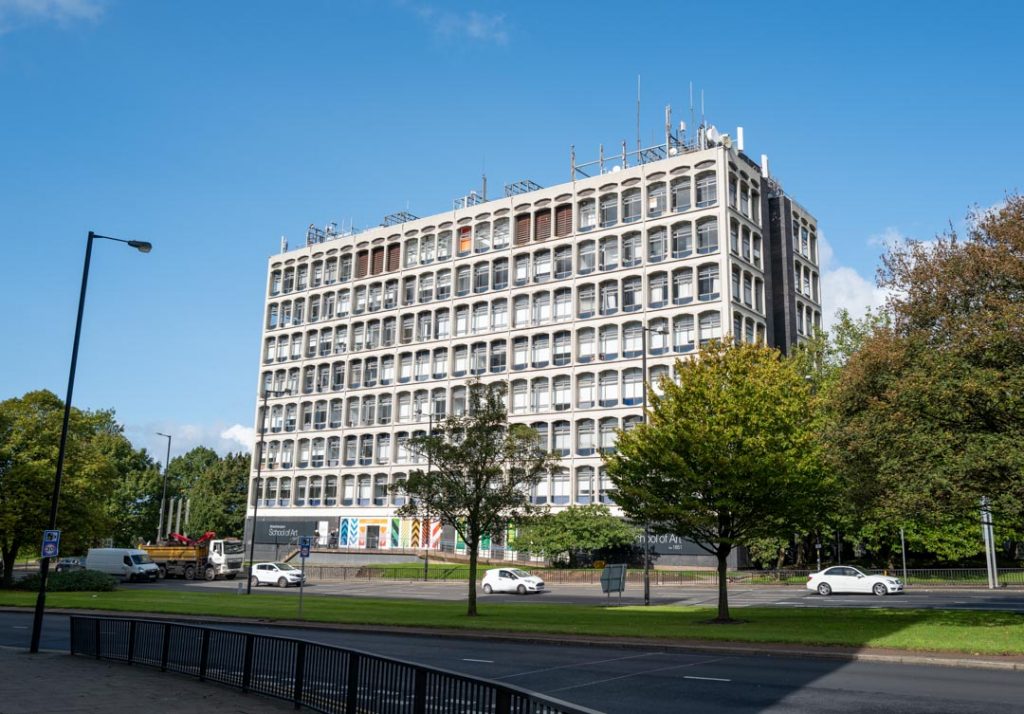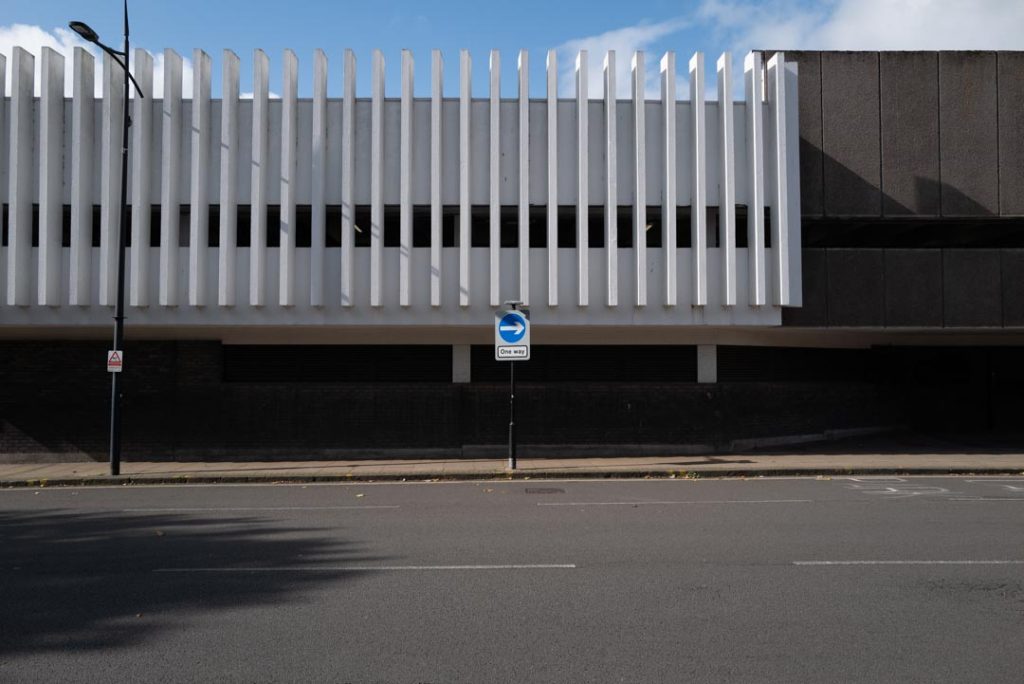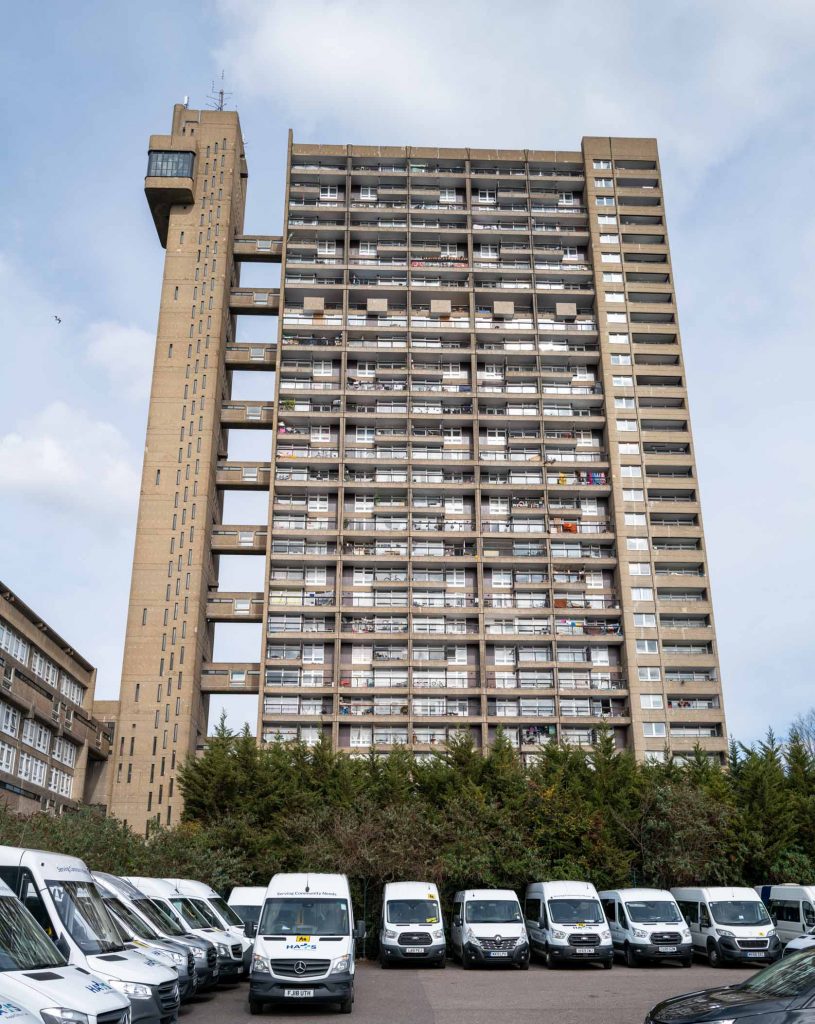Visited the University Of Wolves again this morning for my first session on the module 5FP014 with Dr Sylvia Theuri. We will be with Sylvia all throughout the day on Tuesday with Practice in the morning and Contextual in the afternoon.

Sylvia is an artist and educator as well as an independent curator but she points out that she’s not a technical expert on photography so we’ll need to lean on the other staff for technical support on photography matters.
Looking around the classroom we see that the group has gotten smaller than last year. We’re down to seven people in the group after two have started back on L4 again after not being successful last year. Two class members who haven’t returned have left to join a creative writing course , still at Wolves. The group looks small compared to the new L4 group of around 27 students. It’s good that we’ll be able to have more time with the lecturers/tutors with the size of our group this year, but I need to remember that when they finish this year and move to L6, I’ll still be there doing Level 5 part 2 and therefore become a part of this current large intake.
PRACTICE
Tuesday mornings will be Practice related with every other week seeing us attend individual tutorials for thirty minutes. This time will be made up of preparing a body of work for an exhibition to take place around Easter ’24 along with organising a space to exhibit our work also. It means us all working together to come up with ideas for a location. As there are very few of us this year it might be a good idea to join with L5 Fine Art in an exhibition.
ACTION: Come up with a list of places suitable for an exhibition of our Level 5 Work.
Sylvia explained that we might be taking some trips out to galleries and other relevant places throughout the year to get more ideas and help broaden our knowledge.
One of the first things we got involved with in this session was a brief overview of who we are, what we’re interested in and what our plans are for this year. I explained that I’ve always been about the technical side of photography, some light painting, architecture and abstracts with very little about the arty side of the subject. Last two years I’v epicked up some film photography skills and experimentation along with the weaving and physical image manipulation that I submitted at the end of the last academic year.
After we’d given Sylvia a brief overview of ourselves she handed us the “Practice” assignment brief, not a rehearsal style practice but practice as in our methods and reasoning.
One of the class suggested that the Practice/Tutorial sessions set for the mornings might be better switched with the Contextual sessions/lectures and seminars due to their requirements to get home earlier. To me it makes no difference so I will happily fit in with whatever the rest of the group want to do.
With the session drawing to a close, Sylvia asked us all if anyone needed a chat with her before breaking for lunch. I did say that I would like a short discussion. I didn’t want to go on about being part-time in front of the rest of the group as it sounds a little needy and [please give me special treatment, but I wanted to discuss the part time=ness of my attendance. I discussed that I’m able to attend on Tuesdays, apart from one later this month due to an essential audit taking place at work. If anything else pops up requiring different days I could do with some good levels of notice that will allow me to get holiday request in.
She told me that she understood my circumstances and tipped me off that on the 16th November we might be going on a trip to Birmingham, so I’ve just requested that day off and will rearrange my meetings planned for that day. As long as I’m up-front and honest with both my manager at work and the Uni staff including Sylvia it should be fairly straightforward.
Brief chat concluded and time for a lunch break I wandered into the city centre with my little camera to do some street photography before heading back to the uni for the afternoon session.

CONTEXTUAL
The afternoon in the lecture theatre consisted of Contextual studies work which contained a slide on Expectations and code of conduct where we were asked on what we would consider a condition of creating safe learning spaces.
Our groups responses to this was to mention a safe space to be objective about peoples’ work without feeling bad about providing critique. I mentioned that listening is an important part of any learning spaces, not just the students but the staff also. Listening goes along with respect and can help teams work together to overcome anything. Other ideas were shared so that Sylvia built up a list. This ;ist was then turned into our Class Code Of Conduct for the year. We’re pretty good as a group anyway with very few crossed words that I’ve noticed.
Next on the agenda was the Contextual assignment brief which consisted of Tasks for semester 1 including:
- Artists library
- Contextual assignment plan
- Library training sessions
- Research journal
Task 1, Artists library 1000 words, which is handed in at end of sem 1, December 14th
This is a literary review in simple terms in which we pick a text whihc has been influential to our practice and artistic path. This is also a critical review of the text so it should include notes on what is missed out in the writing and could be included to make it even better or more balanced.
Task 2, Contextual assignment plan
In Semester 2 we will write a 2500 word essay based on one word, this task is to help us plan the essay and the structure, topic etc. On Tuesday 30th October we’ll discuss assignment plan with rest of group
Task 3A, Library training sessions
For this task there are three training sessions, all hosted online by the academic skills team that we need to attend and provide evidence that we’ve done so. I did all these over the last two years but we still must do them again as a refresher.
- Intro to academic writing
- Finding academic information
- Harvard referencing
Task 3B, Research journal
The research journal is what you are reading at the moment, it is this blog, which functions as my sketchbook, research journal and reflective journal too. I have a research Category on my list that can be searched for on the WordPress Blog site so it should be straightforward to go and find research related posts.
On top of these pieces of work, Sylvia said that there will also be some reading required for the sessions, and then shared the following with us.
Tasks for next week
- Read, art and common sense and photography by Victor Burgin
- https://muratgermen.files.wordpress.com/2009/11/artcommonsensephotography_victor-burgin.pdf
- Look through the module reading list
- Listen to Brea Souders – On Chance the messy truth – conversations on photography
- https://podcasts.apple.com/gb/podcast/brea-souders-on-chance/id1459128692?i=1000542301056
Tasks for semester 2
- Contextual assignment
- Research journal
How to Win At Photography
We also looked at another seminar pack called “How to win at photography” which was an explanation of an exhibition by John Yuyi at the Photographers Gallery in 2021
We discussed as a group a quote by Yuyi regarding gamifying photography to become a part of a larger system. It seems that most of the group are happy to try and game the algorithms involved in social media sharing of photos and try to get more clicks and likes etc, where I am happy just putting the information or the photos out and I’m not trying to get my images to fit in with the wider content in the world.
Some of the questions at the end of the pack relate to the Victor Burgin reading that we should complete before attending next week.
- Can any photograph be original? Why?
- Is there such a thing as an original photograph? Why?
- Is there a limit to what can be photographed? Why?
- Do photographs still have the power to shift thinking? Why?
- Do people still look at photographs and see them as reality? Why?
- What photographic works are you drawn to and why?
- How critical are you about photography and photographs?
Post Burgin Thoughts
So after reading through the words of Victor Burgin in his short essay “Art. Common Sense, and Photography” here are my responses to the questions above.
Photographs can be original in their content and form if a subject never before seen or photographed is found, maybe photographs of everything possible had been done up until the 1960’s when cameras went into space and even to the moon. These images could be thought of as “original” as it’s a novel situation. Angles and conditions will dictate the originality of some of these, but one could argue that any photos taken by a human are being curated using the “instrument of ideology”, as Burgin refers to a camera to frame their own world view and unconscious biases.
A photo such as “Pale Blue Dot” taken by the Voyager 1 spacecraft can be used to pass on biased thinking or ideals or even change peoples’ perceptions about the reality of the universe and solar system. People from a religious standpoint could take it as a cue that the heavens are even more vast than first thought, or be persuaded that their religion might no longer fit the model being displayed.
Some faith-less viewers of the image might be inclined to see the image as a photo from the perspective of a God who may have created the universe.
In terms of shifting thinking, photographs may have an effect on the outliers on the margins or those easily swayed, but I sometimes think that photographs have a greater effect on those who may have been 80% set on an ideology. Often confirming their thinking which changes their attitude to one of a polemic and closed minded nature. It’s been suggested that a movement on social media and news media is attempting to split everyone into groups and then stoke the argument between them.
Are photographs reality? Some are yes, but it’s a subjective reality. Photographs of situations taken from a certain perspective skew the perception of the viewer and provide ammunition for the movement/political leaning group to move the cause forward. It’s been seen in recent years that photographs are sometimes faked for propaganda purposes, this is a practice that has been happening since the dawn of photography so it shouldn’t be a surprise.. With the advent of digital photography this is made easier, using photo manipulation/editing software to tailor an image to suit the agenda of the publisher.
Artificial Intelligence is another step toward the creation of questionable content that could lead us to believe things that we see. People now have the ability to edit photographs in Photoshop using the AI plugins that can remove subjects and replace them with something else, change the locations and weather. With this power on a desktop pc and available for any consumer, it will be possible to misuse it in a multitude of ways.
Critical thinking should be adopted at all times, whether it’s a newspaper written article, a. photo of an event or a video of a speech by a politician. With all of these devices, changes and editing has been possible for decades but it’s much easier today so it’ll likely filter down to scams and false advertising, as well as the advertising that Burgin refers to in the text. I’m also critical about who is taking the photo, what their motives may be, and if it’s me I also take into account my unconscious biases that might cause me to focus on one thing rather than another.
The photographic works I’m drawn to aren’t necessarily about a topic that drives behaviour of other people. I lean toward more anonymous images where people are moving through the scene. My photos of Barbican Estate or Trellick Tower for instance don’t have any wider political meaning for me but for people who used to live there before the house prices rose skywards it might appear to be a lightning rod for a movement on the loss of social/council houses. For other people it might appear that they look like the tower blocks of rough estates and make people uneasy. The truth is that it’s a mixture of all of these things but as Kermode and Mayo discuss in their movie podcast, you bring all sorts of things with you when viewing the image/movie. What you bring with you in terms of emotional baggage does make a huge difference.

Brea Souders Podcast
I’ve yet to listen to the podcast from Brea Souders but will do this tomorrow at some point, then report back on it here…
Edit: I’ve now listened to the podcast The Messy Truth – Conversations On Photography. :On Chance with Brea Souders. In it Gem Fletcher asks Souders about her artworks and the methods used to create some of her favourite pieces.
Souders sounds like she’s highly experimental and in her work Hole in the Curtain (2015 – 2017) was using chemicals to damage the emulsion of the photographic images and then leaves it for time to take it’s toll. She will take photographs at different times of the piece as it disintegrates, sometimes capturing the ideal output and sometimes she missed what she wanted and had to start over. She painted images onto negative films using bleach and othe chemistry without being able to see where she had left a mark, until 20 mins later when the bleach had damaged the material so that it was visible. On Souders own website it documents this “The bleach and chemistry rapidly degrade the film, and are thus a purposeful incubator of chance occurrences–fissures in emulsion, selective lightening, bored holes, color shifts, breached borders”
She has also produced a work called “Film Electric” which came about from cutting pieces of other negatives out of her collection. She describes how she was trimming out all of the photos that she would never do anything with and spotted as the little slivers were sticking to the negative sleeves by the forces of static electricity. She chose to capture images of these bits of film on a clear acetate sheet as they stuck randomly, and in the podcast she notes that her timeline of her life can be seen in the fragments.
the third piece of work that she spoke about was “End Of The Road” in which she took photographs of people wandering up to the end of the road, by her house. The collection of people is sometimes random and sometimes others that Souders knew well. She states that during the lockdown, people were walking to get out and about for the limited time they were permitted to and the images come across a little bit Hitchcockian as if they are the shots captured by some Voyeuristic photographer with nothing better to do. She talks about the mystery and random nature of the people, who they are, what are they doing and where are they going. This is often a feeling I get when I’m stuck in a tailback on a motorway when you can see the cars stretch away into the distance and I get to thinking about how other people like me and unlike me are just going about their business, before going home to whatever awaits them. It makes me feel insignificant in the grand scale of things but significant to my family on the smaller scale.
It was an interesting piece of listening, about how chance often helps Souders come up with work and ideas. Chance is a big part of my practice too as I will often wander off the beaten path when walkign around a city or town centre. Annoyingly, to my wife, I refer to getting lost as an adventure and have found some wonderful things to see and photograph out of pure accident.
Famous golfer, Gary Player, once said “the more I practice, the luckier I get” and I find the same with my journeys. The more time I spend exploring the environments I visit, the luckier I get at finding a photograph or view that is not widely seen.
Be First to Comment